The UK, Italy and Japan have taken the next formal steps in developing their sixth-generation fighter under the Global Combat Air Programme (GCAP), confirming a new joint headquarters and a target to finalise a major international contract by the end of 2025.
In a joint statement issued on 7 July following a virtual meeting, UK Defence Secretary John Healey, Japanese Defense Minister Nakatani Gen, and Italian Defence Minister Guido Crosetto welcomed recent progress on the programme and reaffirmed their commitment to delivering the future air combat system on schedule.
The ministers highlighted the official launch of Edgewing, a new joint venture between BAE Systems (UK), Leonardo (Italy), and Japan Aircraft Industrial Enhancement Co. Ltd. (Japan), announced by industry on 20 June. Edgewing will serve as the industrial lead for the programme, supporting development of the sixth-generation platform expected to enter service in the mid-2030s.
The statement also confirmed the opening of a new shared headquarters in Reading, which will host both Edgewing and the GCAP International Government Organisation (GIGO). The co-location of the industrial and governmental teams is intended to streamline decision-making under a unified governance structure and maintain programme momentum.
According to the statement, the three governments aim to finalise the first formal international contract between GIGO and Edgewing by the end of 2025. The ministers described this milestone as key to sustaining pace and deepening trilateral cooperation: “[They] reaffirmed their strong and personal commitment to the programme, and confirmed to accelerate all the necessary work to conclude the first international contract… by the end of this year.”
The GCAP programme was announced in December 2022 and consolidates the UK’s former Tempest project with Japan’s F-X and Italy’s national future fighter plans. The partnership aims to deliver a highly networked, stealth-capable combat aircraft to replace current-generation platforms like the Eurofighter Typhoon and Mitsubishi F-2.
With the establishment of joint governance, shared headquarters and the creation of Edgewing as a unified industrial vehicle, the three nations are now entering a decisive phase in what has become the most ambitious defence collaboration of its kind outside the United States.


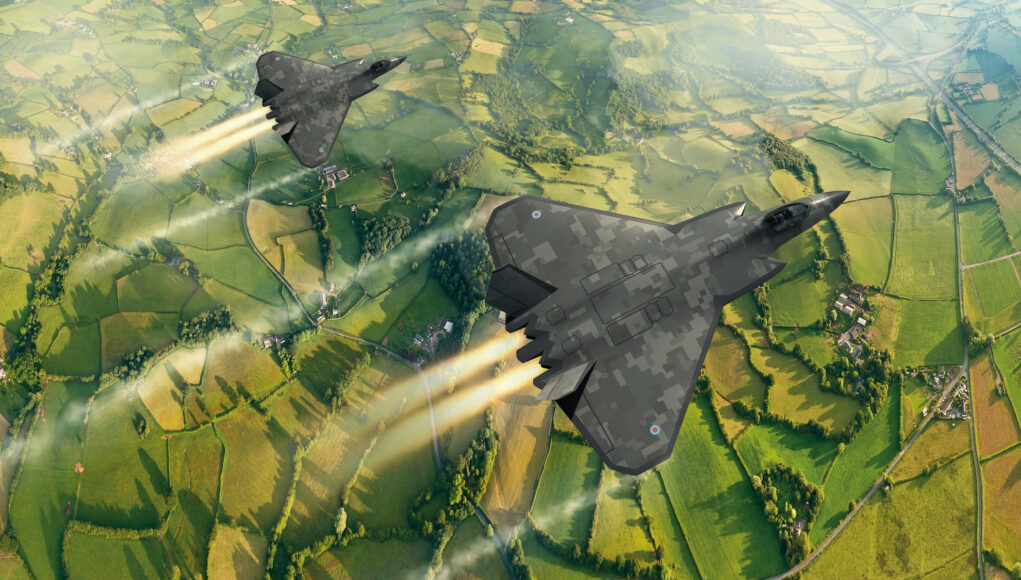
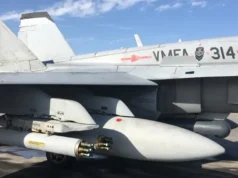

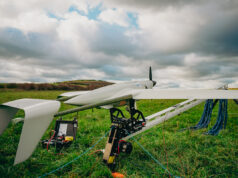
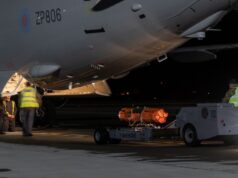
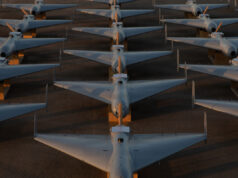
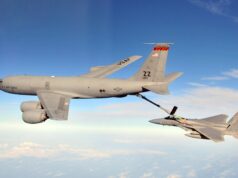
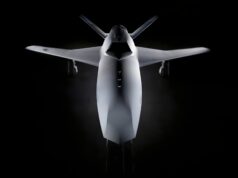

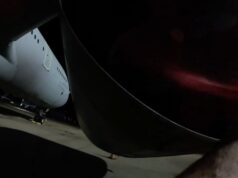
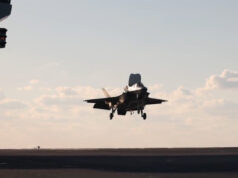

Excellent, meanwhile the Franco German project hasn’t got past a Childish squabbling gunfight yet….
A bit like their tank program as well 🙄
Now, France is looking to have 80% of the workshare to meet the time target.
‘Welcome our new alien overlords’ says no one in Germany. They had agreed to give Dassault design lead on the fighter but apparently even that wasn’t enough they want total control. Well it’s not like the Germans didn’t get a warning from the last time.
Indeed with many expecting Germany will likely opt for Tempest as well.
We need to push on at pace as this programme could make UK PLC a LOT of money. Especially if we sell hundreds to foreign friendly nations.
I’m not sure GCAP is a good fit for Germany, they have historically with Tornado and Thypoon always fought to keep fighters as small as possible.
GCAP is going to be a big beast, along with that, there is now no opportunity for Airbus Military to contribute towards design, as the current partners are already well down the track with with airframe, systems and propulsion.
Germany has two options as I see it, stick with France and get bullied into a minority workshare, or accept the universal alternative and negotiate to assemble F35.
From the Luftwaffe perspective, I am sure they would be delighted with F35 now, as opposed to ‘Euro F35’ in 2040 plus.
I doubt the European project will offer anything significant ‘militarily’ over upgraded F35.
Its going to be a similar size, with similar carry and range ect.
There is a third option. Which is to join Sweden and Saab’s program to replace the Gripen. There are still rumours floating about that Sweden would like to be a partner of GCAP, but to develop an aircraft that meets their particular needs. Where it would use Avionics, engine etc developed for GCAP. I think there is scope for a cheaper and lighter (smaller) fighter aircraft, that could complement GCAP.
I would agree, I always thought it was a crying shame Sweden withdrew from Tempest/ GCAP.
As you rightly say, Sweden could have taken the lead within the group on a smaller single engine airframe, utilising as much Tempest technology as possible.
A Gen6 Gripen if you will, perhaps a tad bigger, F35 sized and able to take on the market for a lower cost fighter.
Both high and medium offerings, would have provided a superb sales opportunity.
Bunfight even…..
Aaaaawwwww – I much prefer the imagery of the gunfight 🙁
the sooner it arrives the better.
They would have to have longwinded bunfight about a gunfight mate, the French would insist on supplying the ammunition as a sole source and being allowed to shoot first!
And they would insist that bagettes were used in the bun fight
It’s encouraging when you see two RAF GCAP’s in a rendition at least.
“May I take your order sir ?”
Meanwhile the FCAS project looks set to fall apart as France demands a 80% workshare.
The biggest issue is the FCAS naval requirement assuming France wants this. Does nothing but add cost for other partners. If FCAS is solely for land based use then France will have to develop a new naval jet which they can’t really afford so their options are FCAS and buy Rafales or F-35Cs, or FCAS only and dump the new carrier plan, or leave FCAS and develop a new naval jet only which could also be a land use jet albeit more costly and less capable.
If and it’s a big if, Spain do get a CATOBAR carrier. Then the SCAF aircraft would be the first aircraft they’d look at, over an F35C as they are part of the SCAF partners. I’m sure Turkey, with the same ambition as Spain are looking at a marinized version of their Kaan 5th Gen aircraft. Not sure if France would be willing to sell the SCAF to Turkey?
Will SCAF (FCAS) be a CATOBAR capable jet? If not then France needs a new naval jet option. If Spain were to consider a CATOBAR carrier, then developing SCAF as a CATOBAR jet seems like a good idea assuming Germany could accept the higher cost. As for selling to Turkey, the other partners besides France would have to agree as well.
France, Germany and Spain are intertwined industrially and commercially in Airbus, it is Dassault that is kicking off in order to defend its monopoly position in French fighter production.
No doubt they will reach a compromise at some point. We have to hope that the GCAP programme continues to run smoothly, because competition with FCAS and the US F-47 is going to be pretty brutal.
I’m not sure if the US offer of a gimped jet will go down well with many..as I bet the price will not be gimped.
According to Aero mag, the SCAP project contributed £13.7bn to the GDP in 2024.
GCAP –
Glad you changed it, SCAP is too close to SCRAP ! and given our history !
Boff! minimal numbers, hyper complex aircraft.
In 20 years where the missile/drone will be?
So what would you do instead?
It is a good question.
I would probably develop it but as a bomb/missile truck with lots of space to put conformal fuel, sensors, weapons, including self defence ones.
I would choose podded engines to be easily replaceable.
Forget mach speed, hyper performance, G numbers.
Spend the saved money to get ballistic missiles and a recon satellite constellation to be able to strike anywhere in the world.
‘I would probably develop it but as a bomb/missile truck with lots of space to put conformal fuel, sensors, weapons, including self defence ones.’
That’s what Tempest is being designed to do.
Do we think the US has made a mistake with F47 by focusing on air superiority whilst GCAP is a truly multi role aircraft but with it’s latest big wing configuration a clear focus on strike?
On the basis of their industrial prowess, the American jet will in all likelihood be a more advanced and capable aircraft when compared to the aircraft fielded by the GCAP partners. One should also remember that the Americans are planning to operate a large force of stealth bombers capable of penetrating area air defence networks. Between those two aircraft, the USAF should have capability greater than that provided to the GCAP partners by the Tempest. That’s ignoring the very likely possibility that the F-47 will have a potent air-to-ground capability as well as being the dominant air-to-air asset (at least when compared to Russian or European equivalents).
You know the F47 is being built by Boeing right 😀
It will show up at three times the budget with a third the capability and the will buy three of them and decry why they never bought more F35’s because it’s the best plane ever.
We have been here multiple times before. The US does not have better technology at a lower price point than us and they won’t have any economies of scale with F47 like they did for F35.
Plus it will keep crashing
Well at least according to their propoganda.
We should cancel the F35A order and go for the F35C. The RAF simply have to face facts we are a maritime Nation and they need to be able to go to sea. Please heed this.
I wont go back and review what I think were the very significant failings of RAF overseas OPs in WW2. They had many, with the only major success being Coastal Command and their Beaufighter strikes late on, which were excellent. But sadly Coastal Command are now massively under resourced.
Hard to say. There will be some metrics by which the F47 will be streets ahead (stealth at a guess), but overall it sounds like it will be too small for the job. It’s going to depend on the system of systems thing. Any weaknesses of the core provision will be bolstered by the loyal wingmen. So it’ll depend of what they can do too.
It’s not clear yet exactly what the F-47 will be. Much depends on how much money is thrown at the program, Trump is somewhat erratic on such matters. After all they have just pumped more money into very costly and somewhat flailing projects at NASA while scrapping generally successful more scientific ones for the most part this week, based it seems on wanting grand pr results for Potus. With a project where presently the priority was naming it in honour of the President it seems, yep someone who wants two engines on the F-35 despite that being effectively impossible and some think an idea he plucked mistakenly out of the blue based on Lockheed considering a two man version, who knows what form and interference the F-47 will eventually take. Especially so when you also have incompetents in most leading positions in Govt and even within the Pentagon now, and of course there’s Boeing’s track record of complacent incompetence. Yes the military fighter side (because they fundamentally aren’t Boeing) has been successful over decades in such aircraft, but they haven’t actually designed a new one for decades, so a supreme and timely design and the eventual result might not be assured, though the hype absolutely will be. As they say sometimes less is more and if we take the F-35 as the pinnacle of US competency then it’s more that until recently no one has really attempted to match it, than it being a particularly exceptional design, let alone remotely within budget or timescale. Historically it’s the overall network and capabilities around US aircraft that make them generally more successful than the opposition, only rarely have the airframes themselves been the best. F-22 has been the obvious exception yet still hardly a model of a successful project… and even then they chose the wrong plane.
‘F-22 has been the obvious exception yet still hardly a model of a successful project… and even then they chose the wrong plane.’
Perhaps from a capability perspective, though from a cost, efficiency and delivery perspective, the YF-22 was absolutely the correct call.
How these aircrafts can survive the drone/missile age? How their bases can be protected by the significant increase in number of threats and the end of rear area?
How many Tempest numbers can any of the three can afford? How many can be build per year and how its production can be increased?
How many do you think will be needed?
How many missile/ drone production facilities can survive strikes from warplane launched munitions?
It has always been the case that there’s a counter to any weapons systems: you counter infantry with cavalry, counter cavalry with lancers, etc, etc. A single system won’t bring you victory, you need the best of each kind, and then known when and what to employ it against.
You can do it in a cave.
“A single system won’t bring you victory”
Aircraft engines won the WW2.
Only in a cave that’s equipped for aircraft production. And caves can be destroyed by bombing too.
No they didn’t.
The “big delta wing” does bring other benefits other than a large internal volume for additional fuel. Which is a significantly low wing loading. Which means it will develop shed loads of lift, so in theory in a turning fight, it won’t lose a lot of energy. The placement and shape of the air intakes will help generate a very strong vortex. Which will help maintain lift at high angles of attack, but also make sure the fins still have authority at these angles. A large area wing, will also help it to reach higher altitudes.
However, there are also some downsides, a very large area wing is rubbish for very low level flight as it is very susceptible to turbulence, making the ride very bumpy. Depending on the overall shape, a large area wing could also make rolling manoeuvres sluggish. Though this can be mitigated by a butterfly tail, so long as it’s placed in the right area and the tail has sufficient area. The other issue with a large area wing is speed. Too much area generates too much drag, which then limits your top speed. Though the engine’s power also has a roll to play.
I still feel the models and renders so far released of GCAP are red herrings, but point at the general shape of the aircraft.
There’s still very little to go on with regards to Boeing’s F47. Looking at its past prototype aircraft such as the YF-118G Bird of Prey”, Phantom Ray, then the USAF images that have been released. There is a family resemblance from the front. But as there have been no side or rear profiles released, its next to impossible to guess at the overall shape and wing layout. However, the USAF has stated that the aircraft will be capable of flying over 1000 miles on internal fuel, which is significantly more than the F22 can manage. Suggesting that the aircraft is not as small as predicted. Though I think the GCAP will still be significantly bigger. For stealth it needs internal weapons bays. If its to carry more than 4 AMRAAM sized missiles which are 12 feet (3.66m) long. along with the fuel needed to reach 1000 miles, it’s going to be bigger than a F22. Whether this means F47 is as per the F22, a purely fighter aircraft remains to be seen.
“Which means it will develop shed loads of lift, so in theory in a turning fight, it won’t lose a lot of energy.”
Big wings make you loose a lot of energy in maneuvering, you said so in next paragraph regarding drag.
I don’t know if the above design is real, but it seems that this will be the Avro Vulcan heir.
Range is the crucial element here, hence the big wing.
I would only say it would need to be more flexible with conformal solutions and engine flexibility. For example Tu-22. I think it is crucial that engines are not restricted by the overall aircraft shape.
Hi Alex, I probably need to give a better explanation.
The GCAP in the image uses a large area delta wing. Aerodynamically a delta wing has a number of benefits over other wing shapes such as trapezoidal as used by the F22. These are significantly reduced wave drag at high subsonic and supersonic speeds. This is due to the highly swept leading edge angle, which helps to delay separation and compressibility. The second is that the larger surface area creates more lift. However, the disadvantages are at slow subsonic speeds, because it has a larger surface area the wing generates a lot of induced drag. Depending on the shape of the delta wing, the roll can be quite slow. This is from the large surface area interfering with the roll, i.e. think the Vulcan bomber when doing slow speed air displays.
However, one of the key delta advantages is when doing a turning dogfight at high subsonic or supersonic speeds. When entering a turn and the pilot decides they want to tighten the turn, by banking hard over and pulling on the stick. The induced g’s start to pile up, this will slow the aircraft down. The pilot will have to try and compensate by increasing thrust. This is where pilots will talk about energy, especially in one circle or two circle dogfights. As an aircraft that can come out of turn or maintain the turn with more energy has an advantage over one that doesn’t.
In general a delta winged aircraft will loose less energy in a high g turning fight than a trapezoidal wing for example. As the larger surface area helps generate more lift. However, most aircraft now use the fuselage to help generate body lift, as well as using strakes and leading edge root extension to generate high energy vortices. These vortices when directed over the wing help generate lift, especially at high angles of attack. The image of the GCAP above shows a chine running along the engine air intake. This along with the placement of the air intake’s leading edge will help to generate vortices. Thereby helping the aircraft to maneuverer at high angles of attack. The spill from the vortex should also impinge on the fin, making sure it maintains yaw authority, when the body of the aircraft is blanking it from the airstream.
However, this all changes at slow subsonic speeds. As the induced drag becomes a dominating factor, hence why manoeuvres can become slow and sluggish. For a traditional delta, such as a Mirage 3, the landing speed was quite high, due to the high stalling/approach speed (100kts/170kts) caused by the delta wing’s highly swept back leading edge and no leading edge flaps. As the aircraft had to fly faster to generate the necessary lift.
Basically a delta wing works best at higher speeds eg over 450kts and is a lot more efficient at supersonic speeds that some other wing shapes. Below that speed it can be unstable and more tricky for a pilot to control (without modern flight control computers).
In service by the mid 2030s… I’ll believe it when it happens. Maybe add another 5-8yrs
Maybe, but of allies only the US may beat it to market and with the Japanese on board we probably have engineering and production competence that matches or out performs the Americans in pretty much every engineering and technology based industry, even if they have less aviation experience (though they did manage to improve the F-16). As long as the three Countries gel on efficiently I expect the project to make excellent progress even if it doesn’t meet that very tight 2035 date. I also note that Japanese launcher and satellite capabilities (despite a few recent blips) have generally been making great progress and over some decades now so I would hope capabilities there might be able to be extensibly exploited to give the platform top end networking and awareness potential by the time it enters service.
Bigger means longer range which allows you to base them far enough away from some ballistic missile threats.
Handy for the Japanese and good for us with our requirement for long over water sorties over the Atlantic.
Seems Japan really wants to push this project forward on time scale and may pull out if we dilly dally about. Personally I’m more concerned with getting airforce numbers up. I think typhoon and F35 combo will be more than good enough. I don’t think we have £14 billion to spend on R&D in the next ten years for Jam in the 2040’s.
I suspect along with SSN A, GCAP is the reason why we are still cutting numbers despite largish annual increase in defence spending for several years.
If the fight is coming it’s coming before GCAP flys.
Better to order a load of F35A and beef up the RAF ASAP with a scattering of orders for Typhoon to keep Wharton working and wait another five years to see what happens with drones.
We need to just bight the bullet and order 100 F35A’s as soon as possible and beg borrow and steal pilot training places around the world to get them manned.
There is one area in which the government has well and truly shot itself in the foot with the Defence budget; personnel costs. To highlight the issue, the Army will receive a £1Bn increase to its budget in the next FY. That is entirely (yes entirely) swallowed by the pay rise and employers’ National Insurance hike.
So a significant increase in the budget just to stand still.
Totally agree, why should anyone in the armed forces expect above inflation pay rises after years of below inflation rises. Don’t they know we have some shinny new toys to buy. What’s labour thinking.
Kids these days, it’s all about the money.
Only got a shilling to join back in my day 😀
Lol – the pay rise is very welcome.
But it’s disingenuous of the government to claim to have significantly increased the budget, when actually it just stops any further reduction in numbers. Especially as a large chunk of it will go straight back to HMT in the form of NI (note that they were forced to exempt the NHS from that)
No it isn’t the budget has increased , this is sums, counting, basic arithmetic.
Some money will need to be spent getting many things back up to scratch due to over a decade of shocking dereliction of duty with regards to pay and conditions and infrastructure.
That is HMG priority, industry and jobs.
For sure, much better importing everything from abroad and save a few quid 😀
And kill our aircraft industry in the process, and end up greatly behind the technological curve in the 2030s, resulting in a scramble to scrape together a capability? GCAP is about forward planning – killing it for short term gain is foolish. Look at the issues faced by the RN currently following the massive cuts to ship numbers and individual ship capability through the Type 45 and Type 26 programmes – that’s the result of your short term thinking.
You can see I’m a fan of overwater ops. This is 3/5 of the worlds surface and is where wars are very often won. Count me in therefore with binning the idea of the F35A but order F35C instead.
An essential project to maintain uk aerospace industry and for Italy, Japan. Hopefully not too fancy and expensive we need to own the software, lower costs than f35
Interesting that the talk is about which will be better, F-47 or Tempest. Personally, I’d be quite happy with second ‘best’ i fit does the job we need it to to, i.e. good enough. If we can get it in service ‘gold plate’ free, can do the job(s) it is designed to do, survive and get home to do it again and be priced at a point where we can buy plenty of them then I’d be happy to let the US claim the best of the best fighters for that cost gazillions of dollars..!
“Give them the third best to go on with; the second best comes too late, the best never comes.” Watson-Watts, engineer and designer of Chain Home radar stations;
“A wise Italian says that the best is the enemy of the good.” Voltaire, 1770.
In short, give us good enough. Does it work? Is it reliable? Can we buy enough of them? etc.
Cheers CR
I would agree and I bet the vast majority if the USAF pilots would agree also.
No one wants another F22 that is too precious to fly and difficult to upgrade.
But Boeing needs a pay day and the Donald’s going to provide because 47 don’t you know 😀
Aboslutely, and that was a point I have made to a lot of people on various forums over the past few years. I’d add that that is the industry mindset, and the focus of the partners. It’s only those in the public who are gunning for gold-plating.
It’s not as simple as that. As the aircraft is designed to compete with not only legacy aircraft and weapons, but those that are coming on line and those that are on the drawing board. A good example is the Russian Su-57. Initially it was scorned as a souped up 4th Gen jet, but the foundation were always there for a very good aircraft. It just needs more development time along with Western avionics. The war with Ukraine has got in the way of its development program. But slowly modifications are being incorporated to increase its “stealthiness”, such as the new stealthy 3D exhaust nozzle. I still would say that the aircraft is very low observable, but still not as stealthy as a F35. But Russia are trying to close the gap. Which is where GCAP needs to aim for. This is especially pertinent for Japan, as they not only border Russia, but also have China to the West.
China have seemingly made significant strides in the last 20 years with its aircraft development. Where following on from the J20 and J35 5th Gen jets, the supposed 6th Gen J36 and J50 have now flown in prototype form. Its the last two that Japan will be concentrating on and making sure the requirement that GCAP must be able to not only compete with, but hopefully dominate these new jets. GCAP will not be a warmed over F35, it will bring new technology and performance to the table, as it has to!
Key to success for the Tempest, FCAS (if it ever happens), and the F-47 is a mission availability rate superior to that of the F-35 which is pathetic. As for cost per flight hour, higher probably, but if these new jets are mission ready most of time, ok by me.